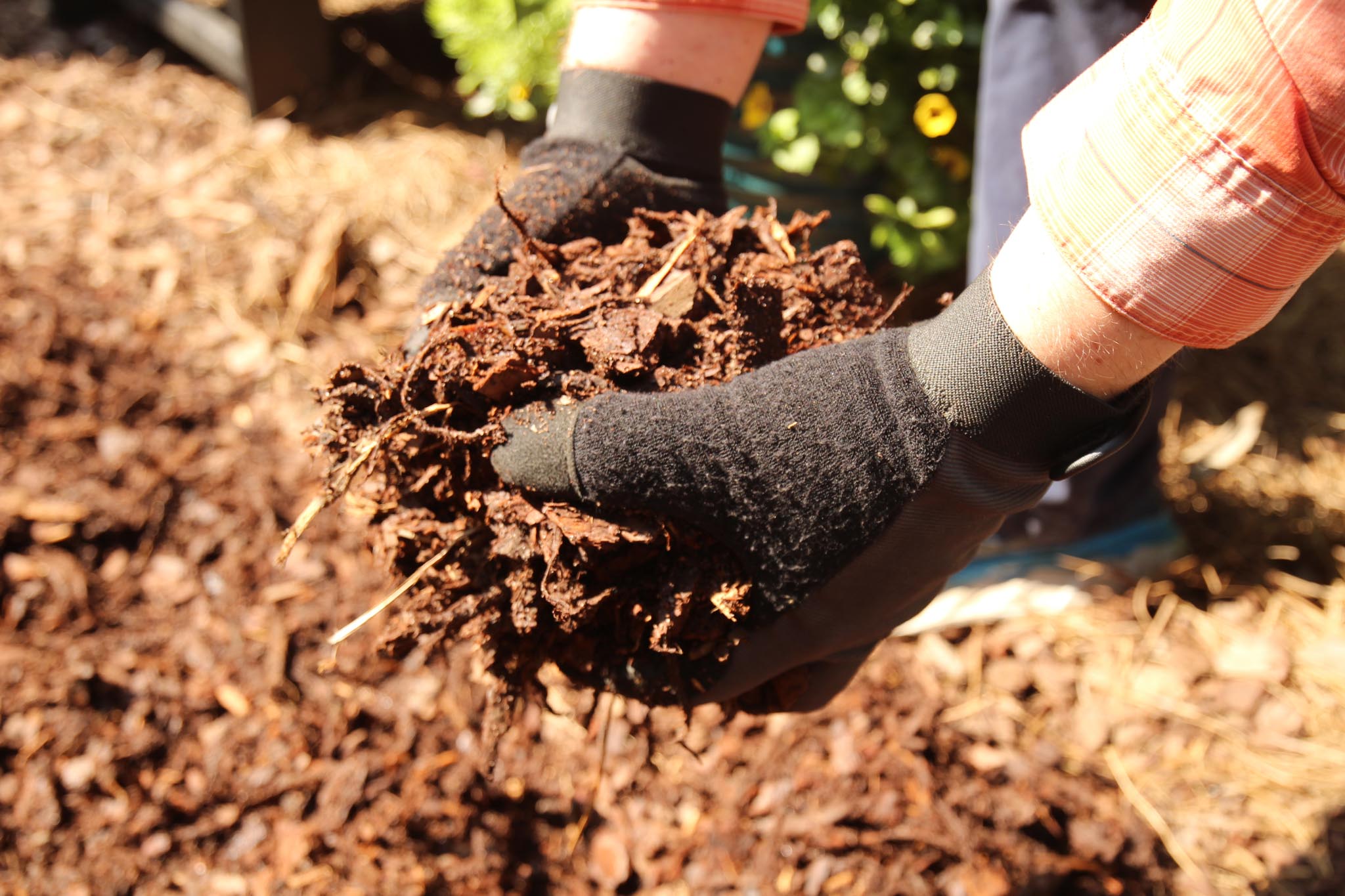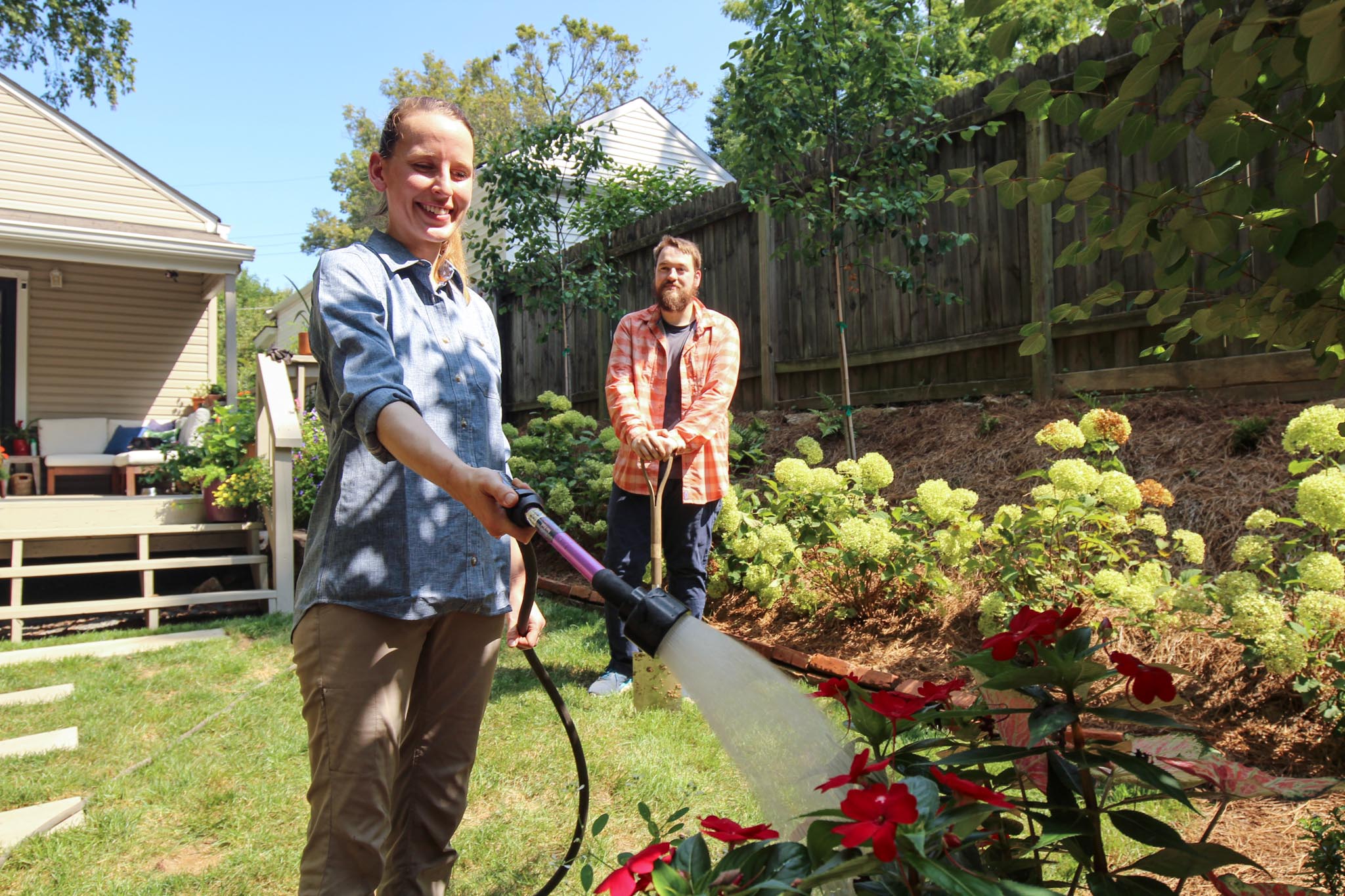Eight steps to a do-it yourself landscape
While there are basic guidelines of color, balance and form, some of the most beautiful spaces derive naturally from a knowledge of plants and passion for them, rather than a strict adherence to design rules.
Landscapes incorporate both creativity and living things. This poses a little more of a challenge than other traditional home renovation projects because our subjects grow, have specific environmental needs—and occasionally, they die.
While it may seem simple to just plant a few shrubs, the overall success of a landscaping project is determined by the amount of time and research you put in on the front end, as well as proper implementation and follow-up care and maintenance.
There is a lot to consider before digging that first hole to ensure that your landscape project turns out the way you imagined. Consider these steps:

1. GET HAPPY
You want to feel happy when you arrive home each day. If you look at your landscaping—or lack thereof—and you don’t like what you see, then it’s time for a change. If you’re living with a partner, this also could be time to be sure you both agree on what you want. Plants are supposed to make you happy and your desire to change your landscape should start from a place of happiness and a wish for something beautiful for everyone to enjoy.

2. PLAN WITH PURPOSE
You want your hard work and financial investment to live and thrive for years to come, and a great landscape adds value to your home. That value comes from being aesthetically pleasing and from its function in your daily life. What’s the purpose of the landscape? Do you want to disguise something ugly? Are you sprucing up your house to sell? Do you want a place to sit and relax or a social space or a vegetable garden? Could you use more shade, or do you just want lots of flowers? Do you want to attract birds and butterflies? Knowing what you hope to achieve with your landscape project will enrich your life and bring value to your home.
3. BUDGET YOUR DOLLARS
How much money are you willing or wanting to spend? As with any new project, talk about money first. If you have never done a landscaping project and have no idea of cost, take a field trip to your local garden center to see what new plants look like and get the pricing in mind. Then formulate a working budget with what you are comfortable spending. This will determine the size or extent of the project. Remember, you can always break up a project into manageable pieces and add on later when the budget allows.
4. DRAW A DESIGN
Now you are ready to begin the design process. Start by drawing circles on a base plan of your home and property. Label them with the different elements you want. If you choose screening for privacy, place a circle where privacy is needed. If you want a perennial flower garden, put a circle where it is sunny and you would get the most enjoyment from the flowers. If you need protection from the sun, put a circle on the south to southwest side of where shade is needed. Continue until everything you want is on the sketch—like a project list in puzzle form. You can work with each circle or project at a time, measuring the space and making a simple sketch to scale to complete your design. The true techniques of design are developed over time through experience. You can also study the designs of others, but there are no magical combinations. Each solution is unique.

5. KNOW YOUR PLANTS
It’s critically important to know what to expect from the plants you choose before placing them in your design, purchasing and planting them. If you want a low-maintenance landscape, do some research and don’t hesitate to ask the experts.. If you are considering a plant, know how tall and wide it will grow on average. If it blooms, when? How long does the bloom cycle last, and what color will the flowers be? Will the plant you choose require any special care? Is it prone to any disease and insect issues? Does it prefer sun or shade? Most importantly, is it fully winter hardy in your area? Start a spreadsheet if necessary. Many mistakes can be prevented by researching your plant selection before you buy.
6. BUDGET YOUR TIME
When to plant is the next issue. The best answer? When you have the time to complete the project, when the plants are available and when you will have time to water regularly and consistently for three months or more. In Kentucky, we are blessed to be able to plant most trees and shrubs almost year-round, but fall is considered the best time to plant here. While spring may be the most emotionally charged time to plant, peak fall planting season runs from Labor Day to the middle of November.

7. PLANT CORRECTLY
If you have never planted trees and shrubs before, consider asking an experienced gardening friend, a local Master Gardener or the horticulturist at your favorite local garden center for technical advice. Experienced gardeners are typically happy to advise new gardeners. No matter what, don’t be afraid to give it a try. It’s hard work, but rewarding when it’s done correctly. The physical planting or installation is an important process that needs to be done properly. Unfortunately, plants die when they are not planted correctly or are watered incorrectly or insufficiently. Always mulch the planting following installation. It is not only decorative, but helps reduce weed growth and retain moisture.

8. WATER WITH CARE
Watering your plants sufficiently is important for the first three months following the initial planting. Your watering days are not over after three months, however. If you planted in the spring, you still need to water regularly throughout that first summer, paying particular attention when it’s hot and dry. If you plant in the summer, then water regularly through early fall. If you plant in the fall, water regularly until the end of October. With fall planting, there is a lot less watering necessary, which saves you both time and money on your water bill.
The big picture
All these steps are important in developing a healthy, low-maintenance landscape. But the most essential point is to choose plants that can grow and mature naturally in the space you have. This is what makes a planting truly low maintenance. Forcing plants to grow in a space that is too small, planting more than is necessary or planting in the wrong environment will result in a lot more maintenance work.
When all these steps are done correctly, the only necessary maintenance should be regular watering, occasional weeding and mulching. This should become less work as the plants mature.
Above all, be realistic. Plants grow and change. As they mature, their annual growth may slow but they never stop growing. The plants you choose may also look different in the nursery than they will when fully grown. Don’t expect perfection, and be able to adapt or change the landscaping when necessary.
Don’t get discouraged if something dies or your design doesn’t work out the way you hoped; experience is a great teacher. Start with small projects and gain knowledge. This will help you plan and prepare for future projects.

